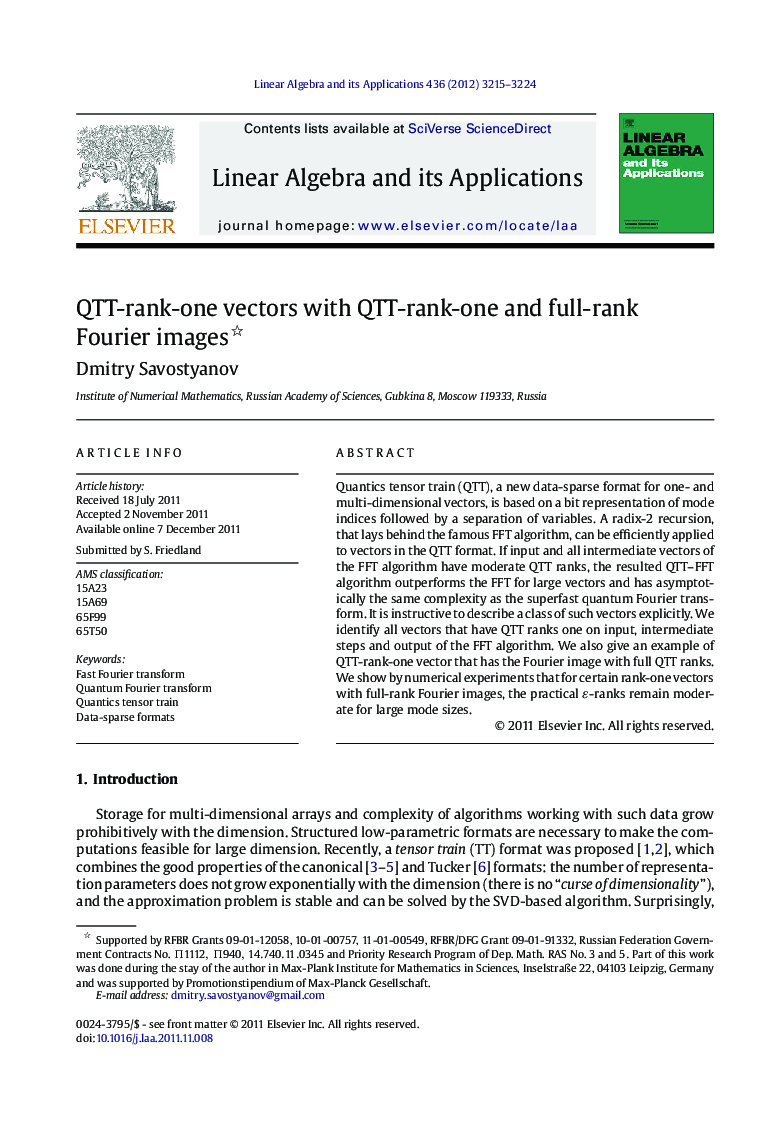| Article ID | Journal | Published Year | Pages | File Type |
|---|---|---|---|---|
| 4601102 | Linear Algebra and its Applications | 2012 | 10 Pages |
Quantics tensor train (QTT), a new data-sparse format for one- and multi-dimensional vectors, is based on a bit representation of mode indices followed by a separation of variables. A radix-2 recursion, that lays behind the famous FFT algorithm, can be efficiently applied to vectors in the QTT format. If input and all intermediate vectors of the FFT algorithm have moderate QTT ranks, the resulted QTT–FFT algorithm outperforms the FFT for large vectors and has asymptotically the same complexity as the superfast quantum Fourier transform. It is instructive to describe a class of such vectors explicitly. We identify all vectors that have QTT ranks one on input, intermediate steps and output of the FFT algorithm. We also give an example of QTT-rank-one vector that has the Fourier image with full QTT ranks. We show by numerical experiments that for certain rank-one vectors with full-rank Fourier images, the practical -ranks remain moderate for large mode sizes.
